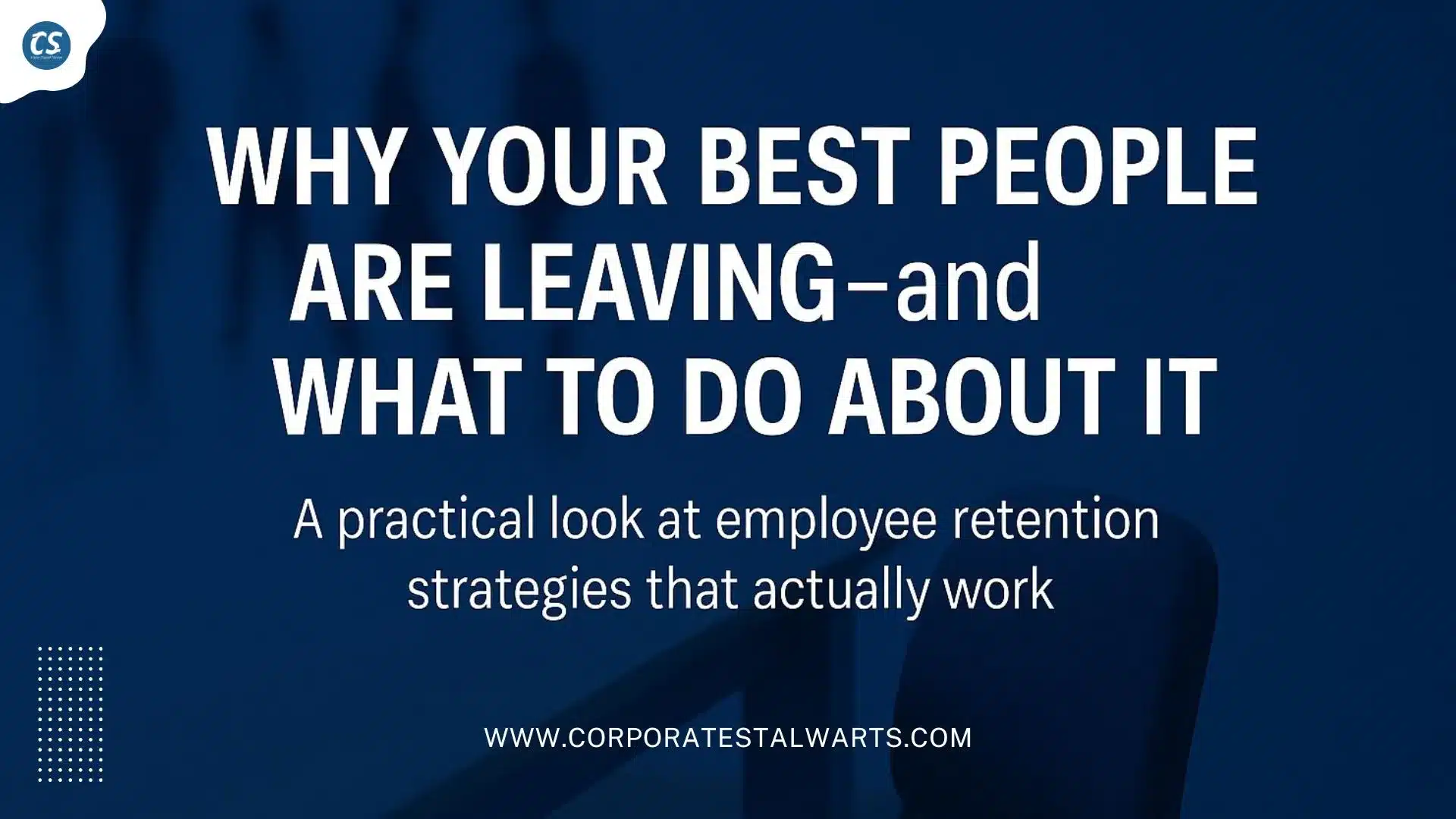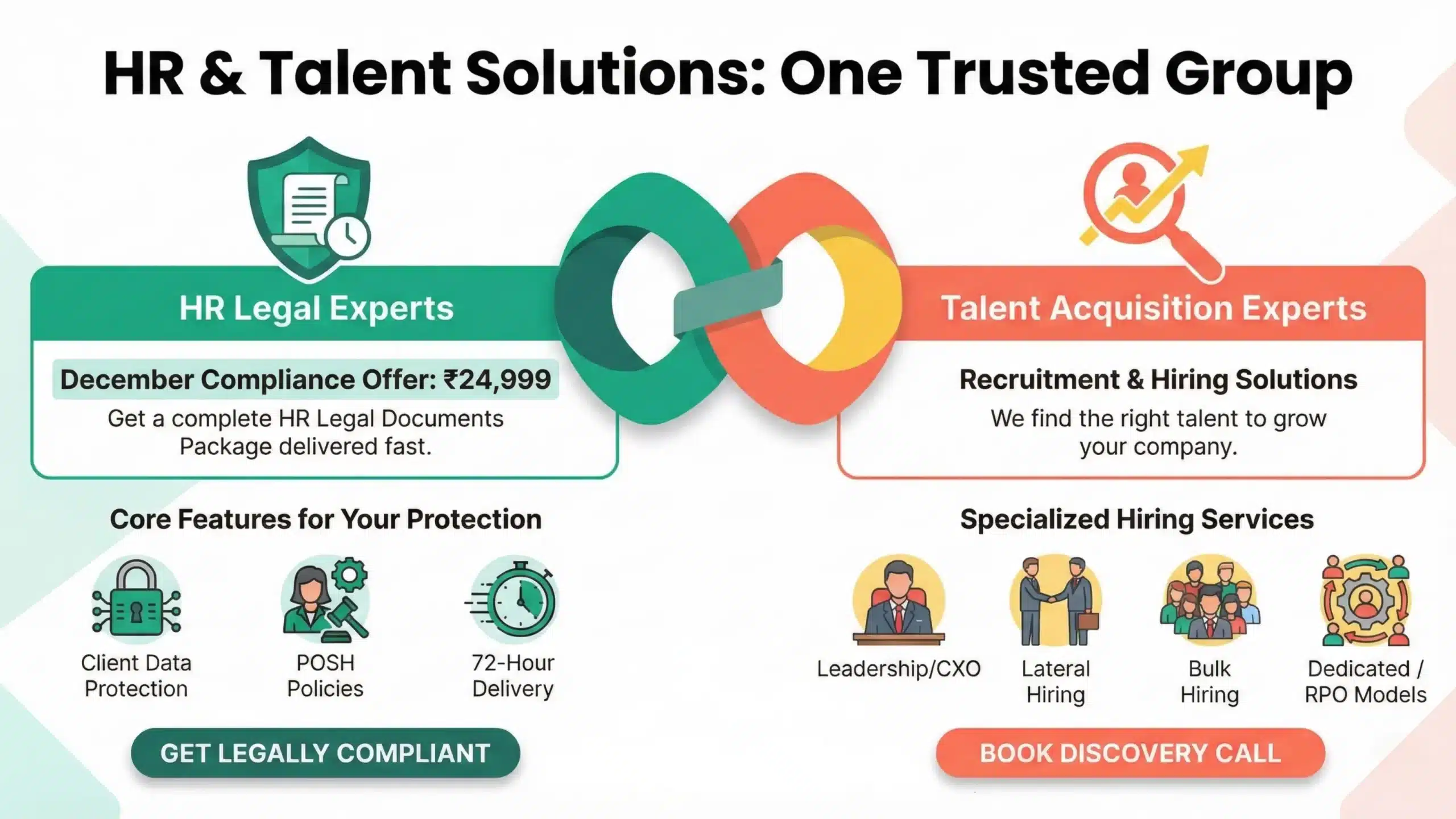You don’t need a resignation letter to know something’s off. You feel it in the hallway conversations, the one-on-ones that suddenly get vague, and the team leads who start dodging strategic planning talks. Then it happens: a quiet performer who’s been your backbone? They’re gone. No drama, just a clean break.
This isn’t just turnover-it’s an employee retention crisis, and it’s picking up pace as we move into 2025.
What’s alarming isn’t just the volume of exits. It’s the kind of people leaving. The ones with institutional knowledge. The ones who knew how to connect cross-functional teams without needing a Slack thread. The ones who didn’t just fill KPIs-they elevated your standards. These are the people you can’t replace with another round of recruitment.
Retention is no longer a reactive problem. It has become the defining metric of leadership maturity and organizational health.
Table of Contents
ToggleWho Really Owns Retention? Hint: It’s Not Just HR
2025, employee retention will no longer be “an HR problem.” It will be a business continuity issue that impacts client relationships, product roadmaps, innovation cycles, and leadership pipelines.
While HR may lead the charge, the true owners of retention are managers, team leads, department heads, and anyone with direct reports.
Why?
Because employees don’t leave companies—they leave experiences. They leave silos, ambiguity, micromanagement, lack of recognition, and the quiet erosion of purpose.
Retention doesn’t live in policies. It lives in moments: a feedback session that feels like a dialogue, not a verdict; a skip-level conversation that feels seen, not staged; a promotion that reflects real growth, not politics.
HR can build systems. But it’s managers who make people stay. Companies that invest in both employee engagement and retention see stronger teams and higher morale. For a deeper dive into practical ways to build a successful team, check out our insights on employee engagement and retention-the key to building a successful team.
4 Employee Retention Strategies That Actually Make People Stay
Retention doesn’t happen because you ask people to stay. It happens because you’ve built an environment where they want to.
Here’s what makes that possible:
1. Career Growth That’s Tangible, Not Theoretical
Every retention conversation ultimately leads to one question: “Where am I headed here?”
Not having a clear answer is the fastest way to lose your best people. It’s not just about title jumps. It’s about skill depth, new challenges, mentorship, and visible investment in someone’s professional arc.
Forward-looking organizations are:
- Building skill matrices that show employees what excellence looks like at every level.
- Creating “stretch project marketplaces” where people can opt into high-visibility work.
- Embedding career coaching into the manager’s role—not as an HR function, but as a core responsibility.
Employees stay where they can grow. Not where they’re just staying busy.
2. Flexibility That Feels Real
Flexibility is no longer a perk. It’s a baseline.
And no, hybrid work policies aren’t enough. Flexibility has to be designed, not assumed. It has to answer the questions: Can I do deep work without being penalized? Can I attend my kid’s school play without guilt? Can I manage my health without hiding it?
Companies doing this well are:
- Co-creating “anchor days” with teams instead of enforcing top-down attendance rules.
- Protecting meeting-free time blocks to enable focused work.
- Offering asynchronous communication norms that reduce the pressure always to be online.
When flexibility is felt, not just announced—employees stop looking elsewhere.
3. Recognition That Resonates
Recognition is feeling seen in your workplace.
People don’t just want to be appreciated. They want to be understood—for how they think, what they solve, and how they contribute beyond the job description.
Real recognition is:
- Timely: Celebrate wins when they happen—not 6 months later.
- Specific: Don’t just say “Great job.” Say, “Your breakdown of that client problem saved us 10 hours.”
- Multi-directional: Recognition from peers matters just as much as from managers.
Companies that embed recognition into daily rituals (not quarterly reviews) see a compounding effect on morale and retention.
4. Culture That’s Actually Felt, Not Just Framed
The real test of culture? What happens when things go wrong?
Do people feel safe raising concerns? Are they looped in on decisions that affect them? Can they challenge without being labeled “difficult”?
Culture isn’t what you put in your onboarding deck. It’s how decisions are made, how conflict is resolved, and how inclusion shows up in promotions, not just panel discussions.
Retention-friendly cultures are marked by:
- Psychological safety: Employees can speak up without fear of retribution.
- Clarity: Teams know what success looks like and how their work connects.
- Belonging: People feel like they matter—not just their output.
Timing Matters: Don’t Wait for the Exit Interview
Employee retention starts long before the resignation letter lands. You need to be proactive—not just with policies, but with presence.
Stay interviews should be the norm, not an emergency tactic. Career mapping should be a conversation in onboarding, not an afterthought when someone’s halfway out.
And if you’re seeing early signs—frequent sick days, disengagement, missed meetings—don’t wait. Check in. Ask better questions. Listen without fixing.
Turnover isn’t always about what’s wrong. Sometimes, it’s about what was never made clear or cared about.
The Hidden Cost of Losing Talent (It’s More Than Money)
Most companies calculate retention loss in salaries and hiring costs. But that’s just the surface. The deeper cost? Productivity dips, team fatigue, and innovation loss. If you want to explore more about the business case for retention and actionable strategies, this in-depth guide from AIHR breaks down what works in 2025.
The deeper cost?
- Productivity dips: A new hire takes 6–9 months to get up to speed.
- Team fatigue: Remaining employees absorb the workload.
- Reputation hits: Clients notice. So do candidates. Turnover whispers louder than your employer branding.
- Innovation loss: People who’ve been around know the business well enough to challenge the status quo. When they leave, fresh ideas stall.
Retention is a competitive advantage—quiet, but powerful. High-retention teams aren’t just stable; they’re confident. They move faster. They trust each other more. They build long-term value.
High employee retention rates are linked to increased productivity and a more stable organizational environment. For more insights on the business impact of retention and proven methods, explore this analysis from LinkedIn Pulse.
How Corporate Stalwarts Help Solve the Retention Riddle
We don’t sell Band-Aids. We diagnose the wound.
At Corporate Stalwarts, we help you go beyond surveys and dashboards. We listen to your managers, your teams, your turnover data, and the stories behind the exits.
Here’s how we work:
1. Deep Diagnosis
We map your attrition data and decode the patterns.
- Which teams have the highest churn—and why?
- What tenure marks the critical drop-off?
- What’s costing you more—replacement or ripple effects?
We treat this like an organizational audit. Because when you understand the “why,” the “how to fix it” becomes obvious.
2. Cultural Fit Interventions
One-size-fits-all doesn’t work for retention.
A flex policy that works for a fintech startup may fall flat in a legacy manufacturing firm.
We help you:
- Build retention frameworks aligned with your industry, workforce makeup, and business stage.
- Tailor solutions to the frontline, mid-level, and leadership layers.
- Balance internal mobility, development, and culture building—all in one roadmap.
3. Manager Enablement
Your managers are the face of your employee experience. We train them to:
- Run meaningful stay interviews.
- Map career paths without empty promises.
- Give recognition that actually lands.
- Lead with transparency and empathy.
We don’t teach scripts. We build capabilities.
The result? A retention strategy that doesn’t collapse when your top HR is on leave. It becomes embedded in how your managers lead.
Effective retention starts at the top. If you’re looking to strengthen your leadership pipeline or bring in executives who understand the value of culture and retention, explore our leadership hiring (CEO/CXO) services.
Why Employee Retention Is the Leadership Metric That Matters in 2025
In a talent-short world, every high-performing team is a competitive moat.
High employee retention doesn’t mean you’re holding people back. It means you’re creating a workplace where high performers choose to stay. They refer to their peers. They innovate instead of burning out. They bring their whole selves to work-and that brings results.
Employee retention isn’t a campaign. It’s a culture. And in 2025, that culture will separate the companies that are constantly rebuilding… from the ones actually scaling.
Want to stop the talent leak before it starts?
Let’s discuss how you can make employee retention your organization’s superpower.

Corporate Stalwarts is a trusted recruitment firm with 20+ years of expertise in executive search and leadership hiring.
We’ve placed 10,000+ candidates across 600+ companies in FMCG, Manufacturing, IT, Pharma, and more. Our 1M+ candidate pool and 48-hour turnaround enable fast, high-quality hiring solutions.
We help businesses build high-performance teams with precision, speed, and industry expertise.






